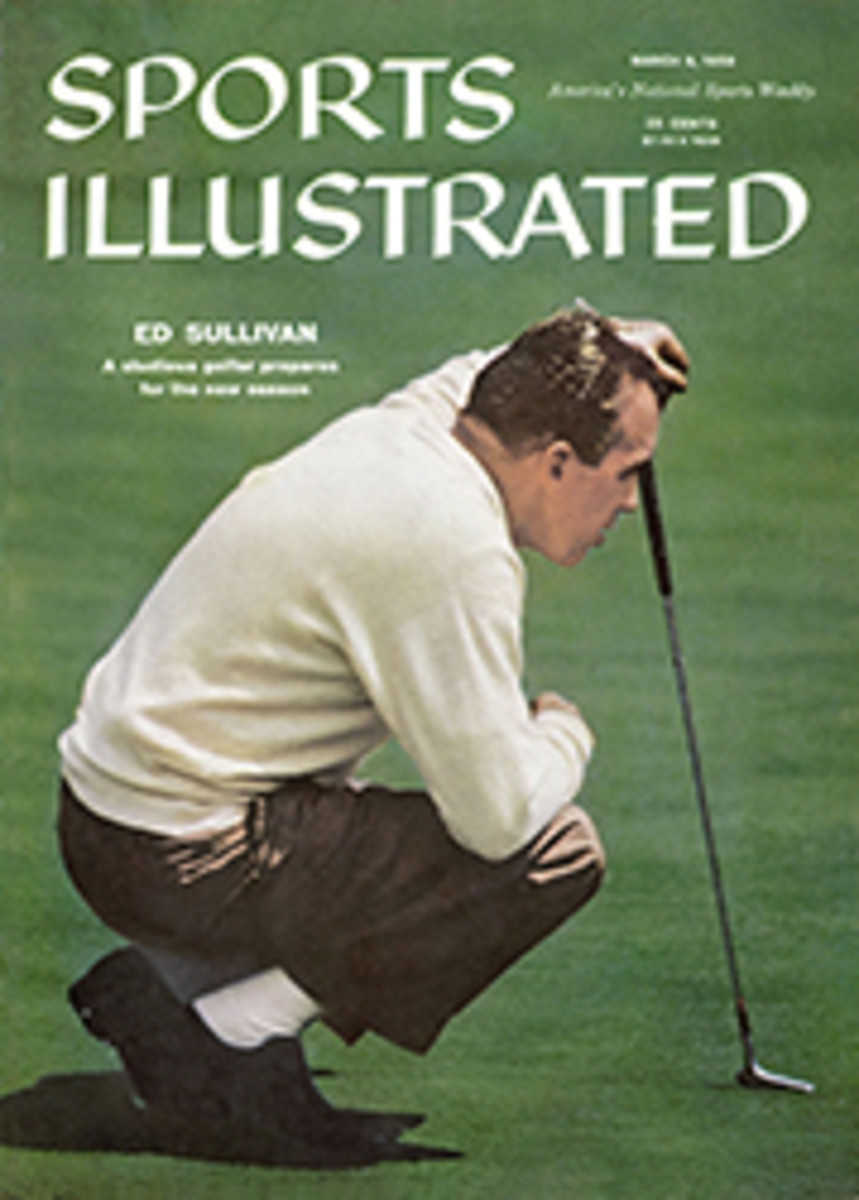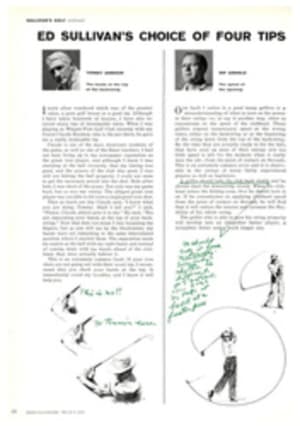
THE CAT LEADS A REVOLUTION
Last week, on the dancing, sun-drenched waters of Biscayne Bay, the seeds of a revolutionary change in a sport were sown. When the spray had settled and the final results were posted, it was obvious small-boat racing would never again be the same. The catamaran had come of age.
Forty of the hottest vessels and crews afloat had been assembled by invitation for Yachting magazine's fourth One of a Kind Regatta. As the name implied, no two boats were alike: it was class against class, type against type, in an effort to settle the recurrent argument of which class is fastest. No finer fleet had ever been brought together. Established classes sent their champions or near champions, and only outsiders of reputation were allowed to enter prototypes and experimental craft.
Yet the emphasis was not on skippers but boats. Special rules were devised to keep tactical maneuvers to a minimum and prevent a lucky gambler from finding a favorable slant. Within three minutes after the starting gun, all vessels were required to be on the port tack and hold it until the weather mark could be fetched or almost fetched on starboard tack. An intermediate buoy halfway up the leg had to be left to port, forcing the fleet to stay in the same air. The only exception allowed was a short clearing tack if backwinded.
And the fast catamarans simply creamed the single-hull craft. In four of the five races and in the straightaway speed trial catamarans finished one-two-three on corrected time, paced by a bright-red twin-hulled flyer named Tigercat which often flew so fast she left a regular roostertail of spray in her wake (right). In the words of her owner, Bill Cox, two-time international Lightning champion (SI, Feb. 23 et seq.), she "went like a bomb," finally ending with a score of four firsts and one second.
Built to repel an invasion by the English catamaran designer and expert Roland Prout, Tigercat did just that, due in part to skillful handling by Eric Olsen, 1954 One of a Kind winner and 1956 Olympic representative, and his crew Glen Foster—but it took a cat to beat a cat. Prout wound up second in over-all standings in Cougar Cat, and one of his earlier designs, Shearwater III, finished fourth despite a disastrous final race. The canoe sailed by the perennial champion Lou Whitman earned a well-deserved third. But, as someone commented, "A sailing canoe is only a catamaran with a single hull in the water, if you're good enough to balance it."
The design breakthrough in the cats was as dramatic and sudden as entry into outer space. In the last One of a Kind series of 1954, the catamarans had gotten nowhere. They were sluggish in light air, tacked with difficulty, lacked windward ability and could not compete in reaching or running with the true planing hulls—the scows and such developments as the 5-0-5, which won. This time the best of the cats were able to do everything, and they proved their worth in everything except speed in drifting conditions—of which there were none, since all events were sailed in moderate to fresh winds. But no one doubted their improvement here, either.
From a vantage point as crew member aboard the Class A scow in the first two races, I was in a good position to appreciate how swift catamarans have become. Scows are traditionally the fastest of class vessels. They had won the regattas of 1949 and 1952, and at 38 feet over-all the A scow is a big boat. By comparison Tigercat was 17 feet over-all and 15 feet 10 inches on the waterline.
After the start, we worked through the fleet and established a good lead on the windward leg. But dogging our stern were the hot cats, Tigercat, Cougar Cat, Shearwater and Wildcat. Fantastic seemed the word for Tigercat to windward. In every race she was among the leaders at the weather mark. But off wind Tigercat was even more astonishing, actually closing the gap between it and the A scow. (In the fourth race Tigercat was second in the entire fleet to windward; rounding two minutes and 48 seconds behind the A scow, she more than halved the gap downwind—and might have finished ahead had not a broken gudgeon caused one rudder to drag!) Sitting on the weather rail of the scow, I could hardly believe my eyes: never had I traveled so fast under sail, not even on a contender for the America's Cup, and yet a craft hardly larger than a dinghy was going faster!
Tigercat in a sense was 10 years building, dating from the time when Robert Harris, a draftsman in the design office of Sparkman & Stephens, became interested in catamarans during the summer of 1949. In 1950 he turned out the 25-foot Naramatac, which he raced during the next two years, including the One of a Kind regatta of 1952, with a ninth in one race the best he could do. Afterwards came Nike and in 1955 Ocelot, which Harris calls "the breakthrough so far as I was concerned." Then Bill Cox came to him with a proposal for building a catamaran to incorporate ideas Cox had been mulling over. Harris worked out the hull shape, the ratio of weight to sail area and construction technique based on his long experience in the field, while Cox contributed heavily to the rig. They both acknowledge the contribution to the type in general by Englishman Prout, 700 of whose Shearwaters are gathered into fleets in nine countries. The hulls of Tigercat are symmetrical—identical twins, in other words—rounded in section, each fitted with pivoting centerboards "properly shaped and at the proper angle of attack" to provide windward ability. If there is a secret to the sudden transformation of this ancient type into an unbeatable craft both to windward and leeward, it probably lies in the combination of lighter weight and improved stability, lessened wetted surface and the ability to add lateral plane by means of centerboards. This, plus rigs and sails almost aerodynamically perfect, including pivoted aluminum masts, luff spars on jibs and full-length main battens, all adds up to speed.
But cats do not "plane" by getting on top of the water in the same sense as planing monohulls. They lack the supporting surface of beam and flat hull sections. Thus there is no "hump speed" where the boat's own bow wave must be surmounted. Instead, they are more like destroyers, very narrow in relation to their length, consequently easily driven and of low wave-making resistance.
How fast will catamarans sail, and how may they be rated in competition against conventional craft? There seems little doubt that a good cat under favorable conditions can travel at approximately five times the square root of her waterline length, as opposed to about 1.3 in a displacement hull. In other words, a 16-foot catamaran should be capable of sailing at 20 knots. At the same time, a nonplaning boat of the same size would be plugging along at 5.2 knots. Thus, even adding the length of the two hulls together and calling a 20-foot cat 40 feet long for rating purposes would not overcome the difference in speed, lending some credence to the remark of an enthusiast: "You can't establish a formula to match an oxcart and a Ferrari. Cats will have to race as a separate class."
The regatta did not prove all catamaran designers had achieved the breakthrough, and there is danger the market will be flooded with basically bad boats, both sail and power. As Roland Prout has written, "There is more to catamaran design than twin hulls." This was proved in the majority of races, when the catamarans divided into two widely separated groups, so far apart it was hard to believe they had started together. Of eight twin-hulled craft, four were consistently in the leading division; the remaining four were mostly back in the ruck.
Nor does the performance of catamarans in sheltered waters necessarily mean they are now equally adapted to long ocean passages, despite pressure in this direction, which undoubtedly will increase, particularly from proponents of cats in the Honolulu race. Bob Harris commented, "Cats can be made strong enough to go to sea and the weight problem can be licked, but it is impossible to forget they lack ultimate stability. Beyond a certain point, they will not recover from a knockdown but capsize. As we're thinking of them today, they're not safe offshore."
But no one who watched catamarans knifing through Biscayne Bay will question that sailing one is the nearest earthbound approach to jet flying—silent, responsive to the touch and with a feeling of exhilaration only the sensation of extreme speed can bring. A new dimension has been added to small-boating. As George O'Day, 1957 Mallory Cup winner and current International 14 champion, summed it up with an invitation after the final races: "Come along to the ceremony. We're burying the planing boats on the clubhouse lawn and making a flower garden of them."
PHOTO
CARLETON MITCHELL
1959 ONE OF A KIND RACE
Catamaran classes given in italics. Boats with the advantage of sliding seats or trapezes are marked with an asterisk.
FINAL STANDINGS
Corrected according to handicap formula which penalizes large size, sail area, etc.
POSITION AND CLASS
1 Tigercat
2 Cougar Cat
3 Canoe*
4 Shearwater
5 505*
6 A Scow
7 Jolly Boat*
7 Wildcat
9 E Scow
10 Dutchman*
11 Fever*
12 Manu Kai
13 Sou'easter
13 Int. 14
15 C Scow
16 Suicide
17 Finn
18 Albacore
19 Darlow Cat
20 Mobjack
21 Y-Flyer
22 Highlander
23 Raven
24 Thistle
25 Snipe
26 Jet 14
27 Comet
28 Cottontail
29 Hula Cat
30 Lightning
31 Flying Scot
32 Windmill
33 Pegasus
34 Star
35 Interlake
36 Gannet
37 Rebel
38 Malibu
38 Shilleleh
FASTEST DOZEN
Boat-for-boat standings (disregarding handicap).
POSITION AND CLASS
1 A Scow
2 Tigercat
3 Couger Cat
3 E Scow
5 Fever*
6 Wildcat
7 Shearwater
8 Raven
9 Manu Kai
10 Dutchman*
11 Jolly Boat*
12 C Scow

